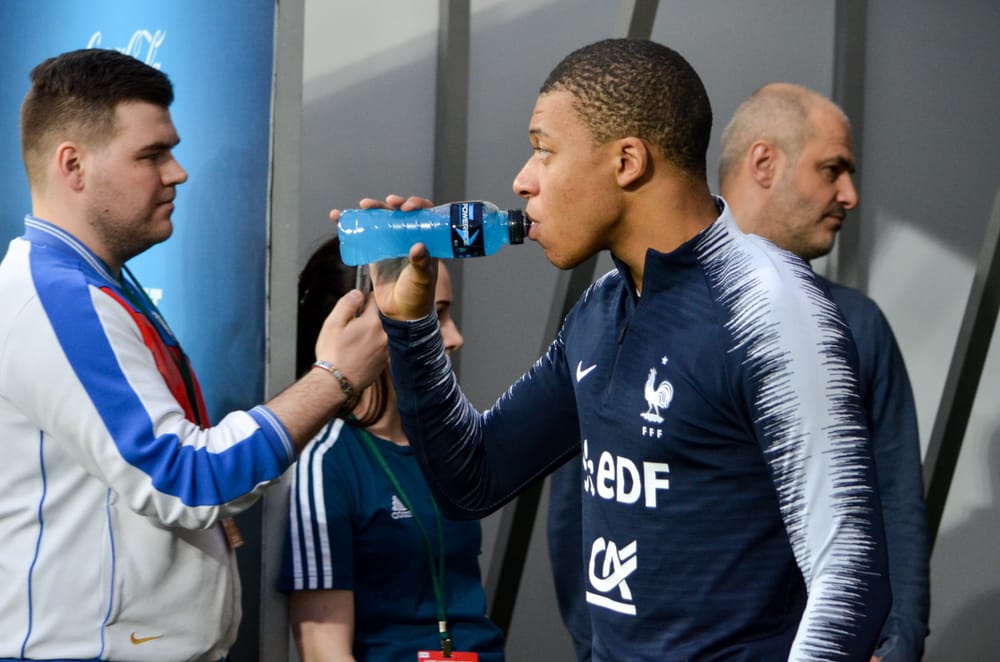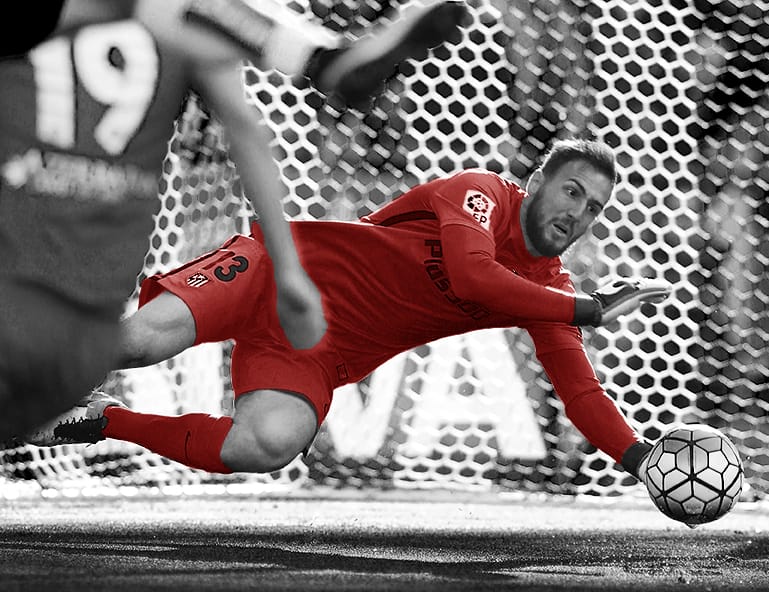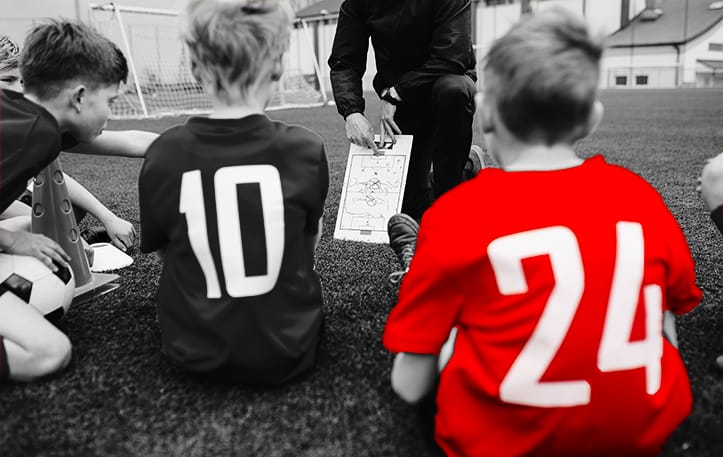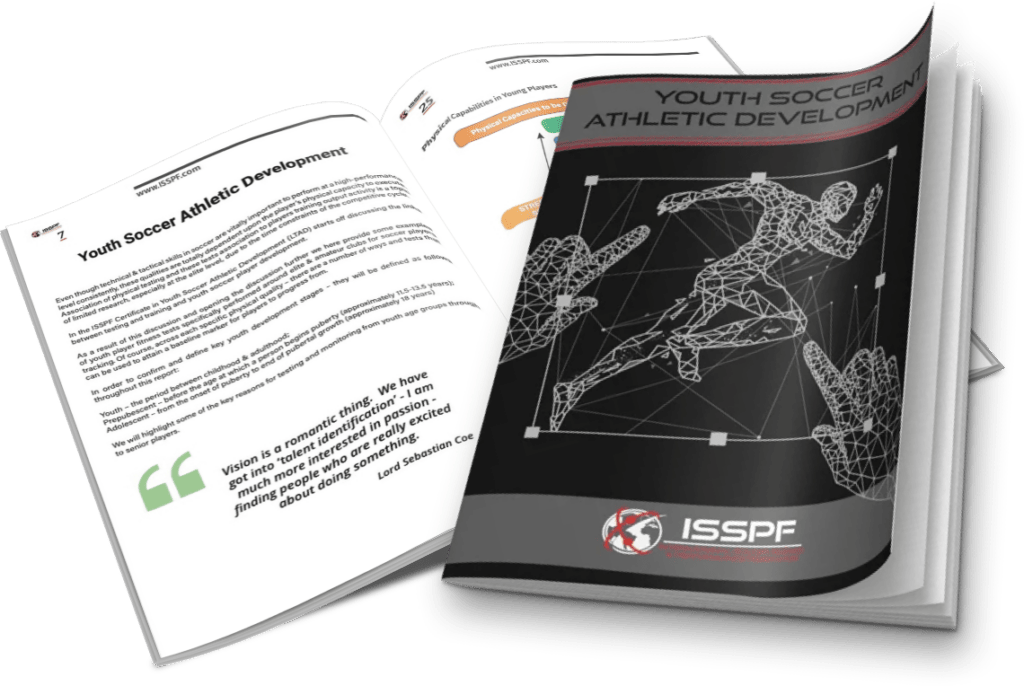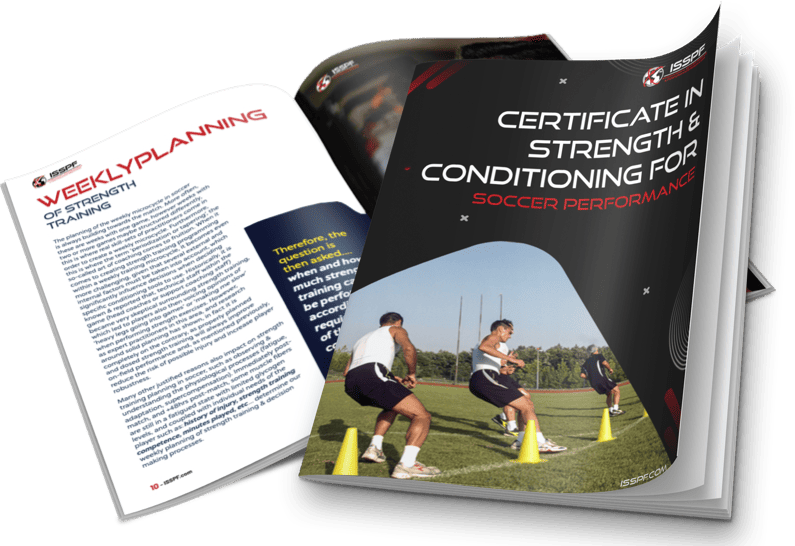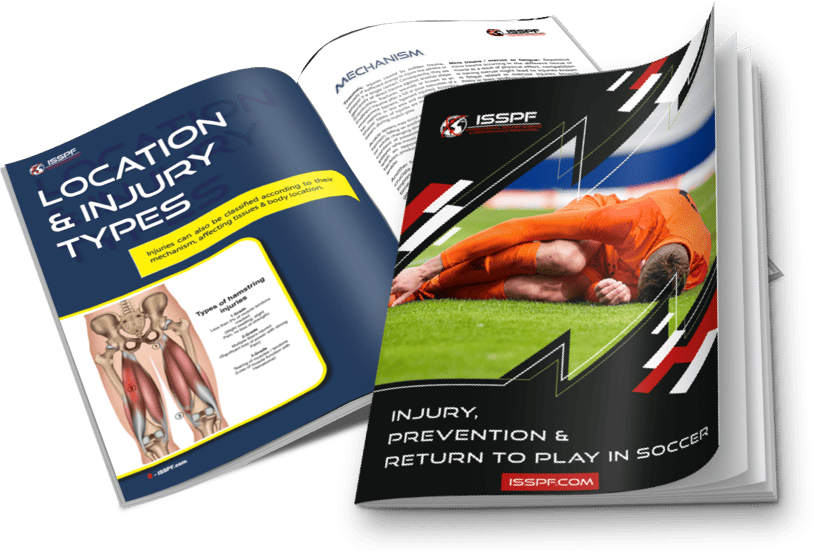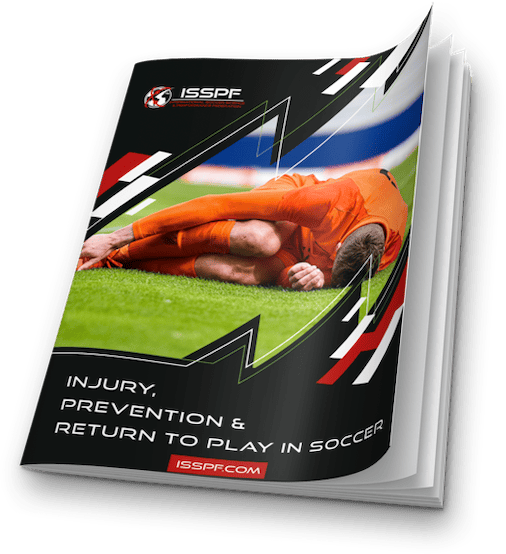In the high-octane world of soccer, where athletes routinely push themselves daily, weekly and monthly to their physical limits, injuries loom as an ever-present concern.
Mastery of injury reduction and the nuances of effective rehabilitation is not just an option; it’s an imperative, especially when viewed through the discerning lens of strength and conditioning. In this comprehensive section exposure to the multifaceted realm of injury prevention and rehabilitation in soccer, uncovering its profound significance and providing invaluable insights that will illuminate the path for strength and conditioning practitioners is discussed
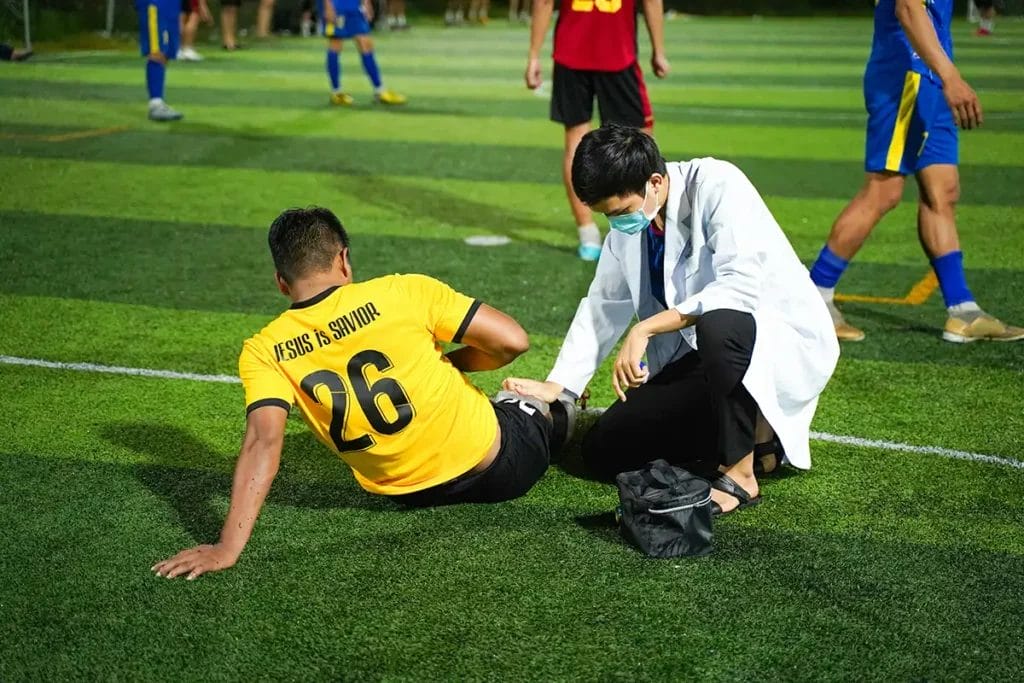
Definition of Injury, Frequency, and Localization
To comprehensively address the intricacies of injury prevention and rehabilitation, it is paramount to navigate the landscape of soccer-related injuries. In the realm of soccer, an injury is officially defined as any physical harm or damage that disrupts a player’s participation in training or matches.
Soccer is renowned for its relatively high injury rates compared to other sports, and these injuries manifest in various forms. Localized areas of concern often include the lower limbs, with a particular emphasis on the knee and ankle regions.
Muscle and tendon injuries are also very prevalent, and result in the most time-lost to sport for players, with at times, head and upper body injuries also coming into focus. Understanding the nature, frequency, and localization of injuries is the foundational step in our journey to enhancing player performance, development in both technical and physical capacity in addition with players mental health and well-being.
Discussing the Importance of Injury Reduction
Injury reduction is not a mere aspiration; it stands as an unequivocal imperative for all coaches and practitioners in the world of soccer. At the elite and professional level of the game, the costs of injuries extend far beyond the immediate physical discomfort for players.
They wield the potential to impact team performance, erode morale, and inflict financial setbacks and lost investment from the club. The gravity of injury prevention or reduction gains further weight when we consider that both acute and chronic injuries possess the capacity to disrupt a player’s career trajectory, potentially leading to enduring health and psychological issues.
From the vantage point of strength and conditioning for soccer performance, injury prevention extends far beyond the realm of building physical resilience. It encompasses a holistic approach that necessitates the simultaneous consideration of biomechanical factors, player conditioning, and the sports environment.
In this endeavour, coaches, trainers, and sports scientists are compelled to forge a united front, crafting a strategic framework that impeccably minimizes the risk of injuries.
At the heart of injury reduction or prevention lies the development of meticulously structured training programs designed with a singular focus—to reduce the risk of injuries. These programs embrace a multifaceted approach that integrates various key components, including:
- Strength Training: Developing strength within specific muscle groups in a contextual way takes centre stage. A robust musculoskeletal system plays a pivotal role in stabilizing joints and mitigating the risk of injuries, especially within the lower limbs. Exercises such as deadlifts, squats and lunges become indispensable tools in this endeavour.
- Flexibility and Mobility: Ensuring that players maintain an adequate range of motion in their joints is paramount. Strategic stretching or flexibility routines and mobility-enhancing exercises form the cornerstone of this.
- Balance and Proprioception: Elevating balance and proprioception acquires heightened importance. These attributes empower players to maintain stability and control during high-stress situations, thereby suggestively minimizing the risk of falls and collisions—an indispensable facet of injury prevention.
- Sport-Specific Drills: Incorporating soccer-specific drills into training regimens proves instrumental. Such drills are designed to mirror actual game scenarios, allowing players to acclimatize to the demands of the sport while simultaneously mitigating the risk of injuries during matches.
Injury Facts and Key Timeline Phases
In our relentless pursuit of effective injury prevention and management, we must not overlook crucial facts and phases intrinsic to the realm of injuries. An understanding of these elements forms the bedrock upon which tailored prevention and rehabilitation strategies are meticulously built.
For instance, certain injuries, such as ligament sprains, often follow a predictable healing timeline. This knowledge informs the crafting of rehabilitation strategies that emphasize early intervention and the systematic progression of exercises.
Strength and conditioning professionals, as well as coaches play an indispensable role in shaping these strategies, ensuring they align seamlessly with the distinct phases of injury recovery, and return to play section.
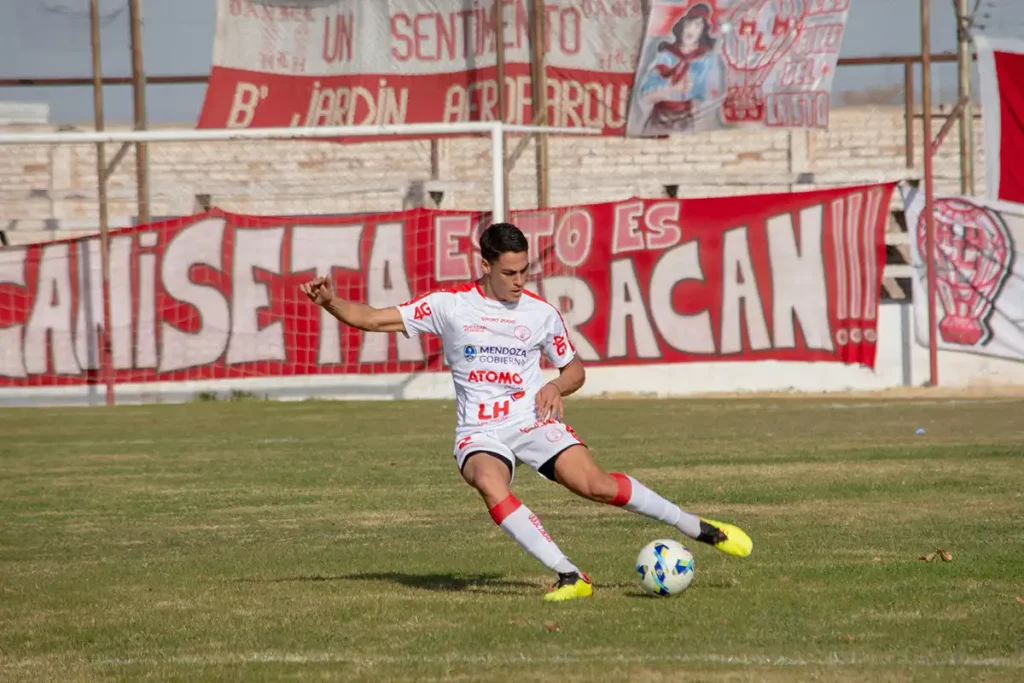
The Role of Rehabilitation in the Return to Play Phase
Rehabilitation emerges as the vital bridge that spans the chasm between injury and the triumphant return to play. It is a multifaceted process that transcends the boundaries of physical healing. Rehabilitation embodies a holistic journey that encompasses psychological and emotional facets of recovery in addition to the physical aspect.
From the strength and conditioning perspective, rehabilitation programs pivot on the meticulous reconstruction of lost strength, mobility, endurance and technical skills. The overarching goal is to reinvigorate the athlete while simultaneously guarding against the threat of reinjury.
These programs integrate a diverse array of exercises and drills, meticulously targeting specific muscle groups and movement patterns to facilitate the player’s seamless return to peak physical form.
The psychological dimension of rehabilitation often remains an intrinsic part of the journey. Overcoming the mental barriers that accompany the prospect of returning to play after an injury can be significant.
Psychological support, often in the form of sports psychology professionals, becomes an indispensable part of the rehabilitation process. ISSPF incorporates a module specifically for this within their Soccer Psychology & Mental Skills Training online course.
These experts guide athletes through the psychological intricacies of recovery, helping them regain their confidence and focus, ultimately paving the way for a triumphant return to the field.

Conclusion
Understanding injury prevention and rehabilitation from a strength and conditioning perspective is not a small part of the process as a professional; it is a fundamental pillar upon which excellence in all other areas of S&C is built.
It necessitates a comprehensive approach that intertwines tailored training programs, an unwavering grasp of injury facts and timelines, and a profound acknowledgment of the pivotal role that rehabilitation plays in the players successfully returning to play.
Through championing the cause of injury prevention and effective rehabilitation as a technical coach or performance practitioner, soccer players can extend the longevity of their careers, while teams can maintain their competitive edge on the pitch through greater training and match play availability and maximising asset performance.
What Now?
The ISSPF online Advanced Certificate in Strength & Conditioning for Soccer Performance course has been designed and executed to add the science behind the actual practitioner and coaching knowledge for fitness, medical or other support staff working with soccer players. This course provides even further depth into the coaching science aspects of strength & conditioning.
In This Course You Will Learn:
- Maximal intensity conditioning periods in soccer: Physical vs. Tactical strategies
- Understanding injury prevention and rehabilitation in soccer
- LTAD – Training Design & Application in Youth Development
- Biomechanical considerations within soccer: Performance ‘strength & movement principles’ Part B
- Peak velocity exposure in soccer: To sprint or not to sprint?
- Strength & Conditioning: A current understanding
- Nutritional optimisation of recovery and adaptation in elite soccer
- A multi-modal approach to quantifying external load in soccer
- Soccer specific game based training: The physical returns
- Application & monitoring post-training & match recovery strategies in soccer
Share this article:
